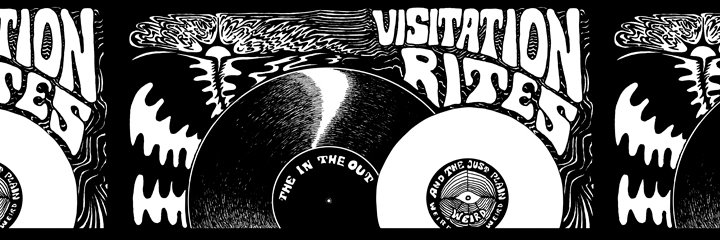
If I didn’t count some of my closest friends in the Brooklyn band Behavior, didn’t know their music like the back of my hand, didn’t even have the pleasure of jamming with them from time to time, I would probably describe their first 7 inch with the following words, and leave it at that: “the “Good Behavior” 45 is two drop dead beautiful psychedelic pop songs from a band that poofed out of nowhere just yesterday, but that seems to already have achieved something of a devoted following in the smoggy North Brooklyn netherworld of legal and semi-legal concert dives.” It may seem a bit dishonest to write “music criticism” about a group that I personally hope to see go very, very far; but since I cannot erase this fact, I figure that doing so openly is hardly as dishonest as faking an absence of personal investment. Moreover, writing about your friends can make for a more three-dimensional picture of the subject at hand: If a 7 inch is kind of the aural equivalent of a snapshot, only someone who knows the photographed environment very well can point to what lies beyond the frame.

What we “see” in this brief image is very lovely indeed: two very taut, well-crafted, counterintuitively melodic pop songs, spun out on rhythmically interlocking pulses of bass (Ian Campbell), guitar (Bryce Hackford), percussion (Khira Jordan), synth (Toshio Masuda), and raw adrenaline. A male voice (Bryce Hackford's) materializes above all this needlework, airborne and sprawling and reminiscent of some long-dead ‘80s rock hero that you just can’t put a finger on, only to be spirited away by the sequential degradations of reverb and echo. If we didn’t know better, we might believe that Behavior was a rock band with a clearly-defined leader/songwriter, one that whiles away its Sunday afternoons rehearsing these meticulously planned anthems to pitch perfection. But even if you haven’t heard these guys live in concert, haven’t digested the fact that none of their performances--even of these very songs--ever sound even remotely the same, there are far too many flyaway notes in the mix to sit comfortably with this conclusion: a certain twang in the bass that casts doubt on its tonal solidity, patches of pure feedback and drone, runaway synth frequencies that bleat their way into oblivion.

No, Behavior’s songs may unfold with skintight precision, but they never seem likely to stay put for very long. (And if they were your downstairs neighbors, you might see an apt metaphor for their music in this bit of biographical backstory: while three of the band’s members are studiously honing their craft up in a shared loft apartment/practice studio in the bowels of South Williamsburg, the fourth is presently walking his way from New York to Los Angeles. No joke.) Nor--given their taste for lengthy driftings of this kind--could they ever summon the military discipline to bend to the whims of a single ringleader. The folks behind Behavior are not the kind of people who would ever wear the communal/utopian badge on their sleeve, but they are one of those rare outfits that actually writes their music one hundred percent collaboratively--improvising their way, however long it takes, into the spastic musical consensus that we get such an iniebriating whiff of on“Good Behavior.” The band also likes it when people list their names alphabetically, which is why I did so above.

Something to consider before you head out to your first Behavior show: played live, the “songs” I refer to here will usually register only as small epiphanies in an extended, echo-dripping, criminally uninhibited free jam. What makes their music so exhilarating to listen to--and actually, so tremendously hard to pin down--is that it is equally defined by both of these musical attitudes--and by the fluidity of the barrier between them. Regardless of how well I can claim to know them, then, describing the beauty of their first offering is less a question of filling in the blanks of what cannot be heard, than of pointing to its constant, insatiable grasping beyond what can. And this realization alone is enough to leave me--and hopefully you--anxious to see where they will take themselves next.
Originally published on Foxy Digitalis, June 2009.




